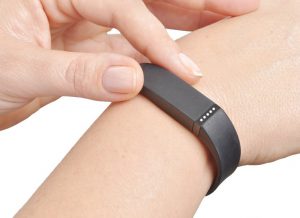The European Soccer Championship is almost here and it’s set to be a thrilling tournament. Who will lift the trophy in the Stade de France? With England’s Harry Kane, Portugal’s Cristiano Ronaldo, France’s Paul Pogba, Germany’s Mezut Ozil and Spain’s Diego Costa all vying for glory, we’re expecting a festival of free-flowing, lively football. And guess what? There’s another star on show, who’s been earning plaudits for stellar performances all year. The name? IoT, of course. Here are four ways we think connected technology could revolutionize the game – and some are already implemented!
Telling you if it’s a goal
Already, technology is playing a huge role in soccer, with goal-line monitoring having been adopted in the European Championship tournaments. The innovation has consigned incidents like Frank Lampard’s wrongly disallowed goal in the 2010 World Cup to distant memory. England supporters will be relieved!
In future, we wonder whether the Internet might play a more significant role in goal-line technology systems like Hawk-Eye and Goal Ref. Perhaps the ball will have sensors embedded in it, which transmit data to a web interface, allowing managers, players and supporters to gain an enhanced insight into the match unfolding in front of them, and eliminating refereeing mistakes by signaling when an opponent has completed a successful tackle. Already there’s an Adidas ‘smart ball’, which provides instant feedback on the way you strike the ball, so maybe this vision isn’t too far off from becoming a reality…
Help managers outwit their opponents
In future, we’re expecting to see the IoT play more of a role in tactics. Already, the technology company, Cisco, has developed software which it calls the ‘Connected Athlete’. It’s a clever IoT solution, which could revolutionize the way managers assess their team’s performance. It works via wireless sensors embedded in the players’ boots and other body sensors, which are connected to the internet via 4G or Wi-Fi. Even more excitingly, the information could link to other networks, raising the possibility of fans accessing data on the players they’re watching, potentially bringing an end to pub arguments over the man of the match award. Managers might be able to ditch the notepad – and analyse their team’s display on a smartphone or wearable instead!
Make soccer safer

Sensors could also help make soccer safer. Unfortunately, the last few years have witnessed a number of tragic incidents on the pitch. In 2012, Bolton Wanderers midfielder, Fabrice Muamba, suffered a cardiac arrest during a match and, despite making a full recovery, was never able to play the sport again. IoT-enabled sensors embedded in clothing may be able to monitor soccer players’ heart patterns, detecting anything unusual and notify club doctors.
Engage with supporters

The benefits of the IoT won’t just be felt on the pitch. We also expect the technology to revolutionize the way spectators enjoy the game. We think that soccer fans will be able to download specialist European Championship apps, where they can receive real-time information on tickets and maybe even order refreshments before they step into the stadium. An example of a sports stadium that has embraced innovative payment solutions is Saracens’ Allianz Park stadium, where fans can order food and drink with prepaid Gemalto wristbands, meaning transactions are seamless and queues are greatly reduced. We believe the technology could see widespread adoption in future, contributing towards creating an even more engaging experience for fans.
What do you think of the potential of the IoT in soccer? Let us know your thoughts – as well as your digital expectations for Euro 2016 – by tweeting to us at @Gemalto, or by posting a comment below.


